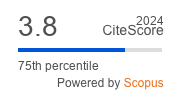Article | Open Access
Nature-Based Deployment Strategies for Multiple Paces of Change: The Case of Oimachi, Japan
| Views: | 2474 | | | Downloads: | 1130 |
Abstract: In this article a planning approach is proposed to accommodate different paces of urbanisation. Instead of responding to a single problem with a Pavlov-type of response, analysis shows that the transformational tempi of different urban landscapes require multiple deployment strategies to develop urban environments that are sustainable and resilient. The application of nature-based solutions, enhancing both human and natural health in cities, is used as the foundation for the design of deployment strategies that respond to different paces of urban change. The results show that urban characteristics, such as population density and built space is, partly, dependent on the underlying landscape characteristics, therefore show specific development pathways. To create liveable and sustainable urban areas that can deal holistically with a range of intertwined problems, specific deployment strategies should be used in each specific urban context. This benefits the city-precinct as a whole and at the local scale. Even small nature-based solutions, applied as the right deployment strategy in the right context, have profound impact as the starting point of a far-reaching urban transformation. The case-study for Oimachi in Japan illustrates how this planning approach can be applied, how the different urban rhythms are identified, and to which results this leads.
Keywords: deployment strategy; nature-based solutions; rapid urbanisation; resilience; transformation; urban change
Published:
© Rob Roggema, Nico Tillie, Greg Keeffe, Wanglin Yan. This is an open access article distributed under the terms of the Creative Commons Attribution 4.0 license (http://creativecommons.org/licenses/by/4.0), which permits any use, distribution, and reproduction of the work without further permission provided the original author(s) and source are credited.


